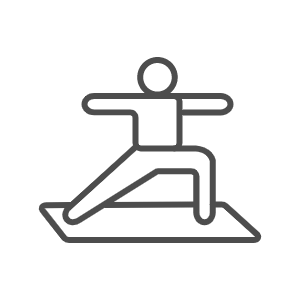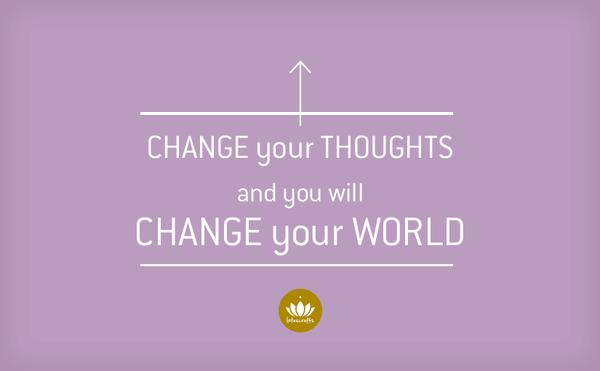
NEW In!
PURE-Matte Light TaupeShopping cart
Your shopping basket is empty
Yoga

Meditation
Sets & Bundles
Jasmin Rieberer sits on her yoga cushion like a breathing statue and meditates. Eyes closed, senses turned inward. Quiet. Serenity. Silence... at least from the outside. "During meditation, thoughts often race through your head like on a highway at rush hour," says the yoga and meditation teacher about her many years of experience in this area. "But meditation is awareness, self-reflection, mindfulness — when disturbing thoughts come up, I have the power to replace those thoughts with positive ones."

This has positively changed her life in many ways. The Indian scholar Patanjali also knew that meditation is balm for the soul. In his writings he writes that we have the power to replace negative thoughts with positive ones to pave the way to a happy life. Today, around 2000 years later, this has also been scientifically proven.
In technical jargon, this is referred to as "cortical remapping" . Brain scans show that new nerve cells and synaptic connections can always form. In other words: We can actively change our brain through meditation.
But what exactly is going on in the head cinema while you sit quietly and breathe? And what positive effects does this have on our brain? In the following lines you will learn how to give your brain a neurological make-up and replace negative habits with positive ones.
Basically, our brain needs three ingredients to function:
Now, the human brain is made up of an estimated 100 billion neurons, and any activation—whether in the form of a thought or physical activity—makes those neurons dance. This can have positive or negative effects and significantly affects the way we think and act.
This ongoing reorganization in the brain is called neuroplasticity or cortical remapping. The more often two neurons fire together, the stronger the connection between them and the less stimulation it takes to evoke a response.

Our neurological network helps us remember what to do in a given situation. Unfortunately, these self-imposed behaviors are usually difficult to change.
A comparison: the brain is like a snow-covered hill in winter. When we go down the mountain on a sledge for the first time, we can flexibly choose the route. We have the opportunity to take all paths . But if we choose the same track through the soft snow for the second or third time, deeper tracks will develop. That's efficient: the sledge runs well-guided and quickly down the mountain. But it can also happen that we get stuck. It then becomes more difficult to embark on a new path. Thank goodness our brains have the wonderful ability to rewire themselves. Or as Donald Hebb would say, "Neurons that fire apart, wire apart." And that's where meditation comes in.
... extends from the soles of the feet to the head. Especially at the beginning of the meditation practice, all kinds of stimuli for the brain appear: from feeling the breathing movement, conscious sitting to observing your thoughts . "The goal of meditation is to calm your thoughts and to fully immerse yourself in what you are doing," explains Rieberer. “At the beginning all sorts of thoughts will go through your head. But try to stay with yourself. It's about just observing your thoughts without judging them.”
By looking at the thoughts from afar, one can decide which activities to make a habit and which not to. And that is the basic requirement for something to move in your head: mindfulness .
A study recently published in the journal Frontiers in Human Neuroscience in May 2015 shows images from a magnetic resonance imaging (MRI). These show that regular yoga and meditation practice leads to a thicker cortical wall (cerebral cortex). This means that people who regularly meditate on
In addition, regular meditation practice slows down the aging process in the brain. Because yoga and meditation protect the brain from the decline in gray brain volume. According to the study, people who regularly practice yoga and meditate had a brain volume comparable to that of young people.

A look into the meditating head
Which areas of the brain are particularly stimulated during meditation? Another study paints the following picture: after eight weeks of meditation practice (about 30 minutes a day), the participants experienced thickening in four brain regions :
There was also a change in the area of the amygdala , the fight or flight center. This part of the brain became smaller in the test group, which explains the reduction in stress levels in the subjects.
Also interesting: The protection of the gray brain volume takes place mainly in the left hemisphere - the side that is responsible for positive emotions and experiences and stimulates the parasympathetic nervous system. Brain scans show that emotions like joy and happiness also show more activity in the left hemisphere.
This explains what many people who regularly practice and meditate yoga feel first-hand: Meditating makes you happy! In a culture where we are constantly planning for the future, meditation helps us stay in the moment, consciously reflect and think positively.

You can make this beautiful meditation cushion yourself - in your favorite color and the fabric of your choice. In addition to the video, here are ...
Continue reading
Mudras are gentle finger exercises with great effects. Especially for the meditation practice, the often graceful hand and finger positions are a ...
Continue reading